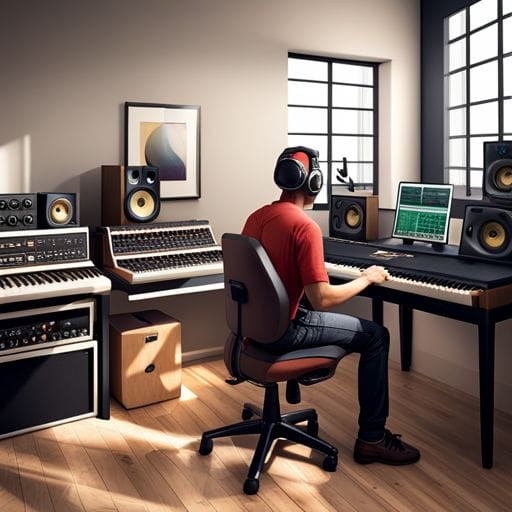Producing Future Bass: Smooth Synths and Driving Beats

What essential equipment or software is needed to produce Future Bass style music?
In the realm of electronic music, future bass stands as a prominent genre that masterfully blends the intensity of trap and dubstep with the melodic elements of pop music. Gaining significant attention since the early 2010s, future bass has established its musical influence globally, thanks to its unique focus on smooth synths and driving beats.
Understanding Future Bass
Future bass originated from the UK but has since spanned the globe, spearheaded by artists like Flume, San Holo, and Illenium. At its core, future bass highlights emotion-filled melodies, hard-hitting basslines, and sophisticated synth elements. It is the perfect marriage between energy-packed electronic music and sentimental fluid melody that pulls at the heartstrings. But how do music producers weave these elements to create irresistible future bass tracks? Let’s delve in and explore the process.
The Backbone – Driving Beats and Basslines
Perhaps one of the most critical aspects of producing future bass music is crafting the beat and bassline. The rhythm section in future bass is energetic and uses syncopated, complex beats derived from trap music. Hard-hitting kick drums, snappy snares, and intricate hi-hat patterns are the building blocks for making a future bass rhythm section.
Your bassline, like your beats, must punch through the mix – it is, after all, called ‘future bass’ for a reason. There’s no single route to producing your bassline – it’s all about what fits your track best.
Creating Dynamic Synths
The soul of future bass lies in its use of synths. Synths in future bass are texturally rich, featuring lots of movement and modulation. Producers often layer multiple synths and use automation to create evolving, expressive sounds. It’s not uncommon in future bass to hear a synth line that constantly changes in intensity, pitch, filter cutoff, or another parameter, thanks to the magic of automation.
Chord Progression & Melodies
In terms of harmony and melody, future bass relies heavily on lush, expansive chords and catchy melodic hooks. The chord progressions often appear to ‘move’ due to the layered synths, pitch bending effects, and syncopation. More often than not, the melody lines in future bass are emotive and beautiful, contrasting the heavy beats that drive the rhythm.
Utilizing Vocal Samples
Vocals in future bass are another essential element. They’re often treated with effects like pitch correction, time-stretching, and reverb to create an ethereal, surreal vibe in the mix. Vocal chops, especially high-pitched, ‘chipmunk’-style voices, also dominate future bass tracks, adding an extra layer of interest to the music.
Finishing Touches – Mixing and Mastering
Mixing and mastering are critical in any genre, and future bass is no exception. The goal is to blend all your elements – beats, bassline, synths, and vocals – into a cohesive, dynamic mix. Balance is of the essence when mixing future bass, as you want your thumping beats and bass to coexist harmoniously with your delicate vocals and synths. When done correctly, mastering elevates your music, ensuring it translates well across all devices and platforms.
Conclusion
Creating future bass can be a highly rewarding musical journey, brimming with creativity. Its blend of driving beats, luminous synths, and emotive melodies opens a world of musical possibilities and promises to keep listeners engaged and coming back for more.
